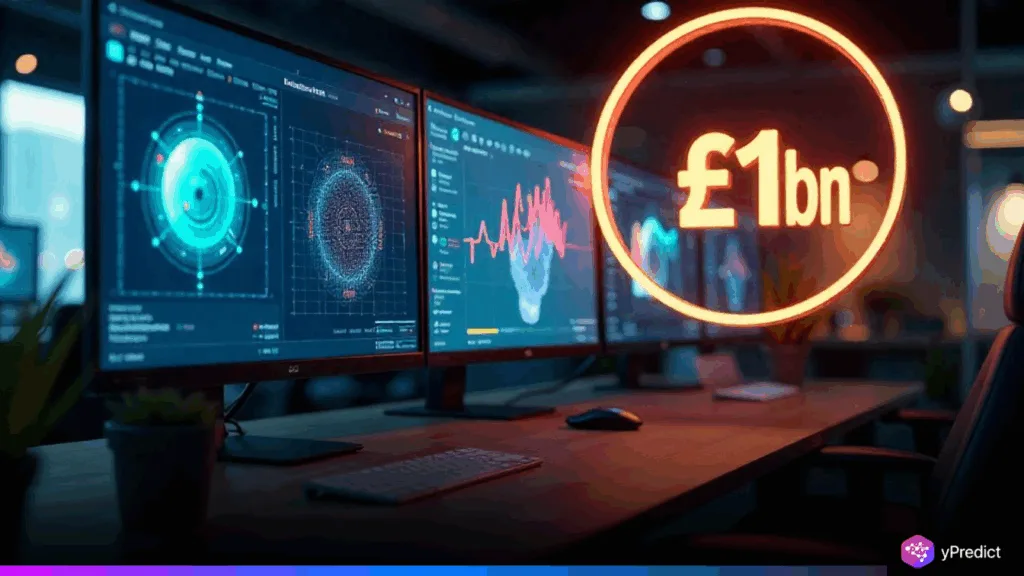
UK artificial intelligence startup PhysicsX has received $135 million, taking its valuation to around a billion dollars. A startup established on the basis of former Formula 1 designers. The company uses AI to improve design-related activities in the defense and manufacturing industries, including optimizing engine and drone parts. The company has been financially supported by investors such as Siemens, Temasek, and Atomico. However, the trend is coined and the high demand for AI-driven research and development goes alongside the rise of geopolitical tensions and reindustrialization in Europe and North America.
AI at the Core of Next-Gen Industrial Design
PhysicsX is taking advantage of an increasing demand for smarter, more cost-tractable design in defense and manufacturing. It also has AI technology that allows simulation and modeling that are quite superior when compared to conventional engineering processes. Through integrating AI into fundamental R&D, the startup assists customers in shortening the design cycle, maximizing material usage, and optimizing product effectiveness, particularly when it comes to projects such as the creation of turbines and the optimization of drones. Its clients are giants of the industry, such as Leonardo Aerospace and Rio Tinto, indicating that they entrust it with their high-complexity engineering issues in which an AI-based approach is utilized.
Unlike many startups shifting headquarters to the U.S., PhysicsX maintains its base in London. Underlining its commitment to strengthening Europe’s industrial AI ecosystem. The startup now employs over 150 staff across London and New York and plans to use the new funding to expand its AI capabilities and client base. Co-founder Jacomo Corbo believes AI technology is now at an inflection point for industrial applications. “Companies are changing the way they do engineering,” he said. Pointing to increased R&D spending driven by global uncertainties. And the need to produce more with fewer resources, a central promise of industrial AI.
Global Trends Push AI Into Strategic Industry Frontlines
PhysicsX’s rise comes amid a global surge in AI applications targeting core industry challenges. It’s a $135 million funding round that follows similar moves by companies like Helsing and Tekever. All driven by growing military budgets and the need for smart, efficient engineering. The startup’s edge lies in fusing physics-based modelling with machine learning, cutting through traditional bottlenecks in simulation, prototyping, and manufacturing. Investors see PhysicsX as emblematic of a broader “do more with less” mindset now shaping advanced economies. Atomico partner Laura Connell described it as reaching a “tipping point,” where AI tools are not just complementary but foundational to how things are built.
Whether designing jet engines, improving battery systems, or optimizing materials, AI is becoming the brain behind next-gen industrial workflows. The company’s European base is part of its strategic positioning. While many startups migrate to Silicon Valley, PhysicsX is doubling down on building out of London, leveraging Europe’s renewed focus on reindustrialization. Corbo, who previously sold his data startup QuantumBlack to McKinsey, said there’s a “massive opportunity” in Europe to rethink engineering through AI. This latest round brings PhysicsX’s total funding to $175 million and values it just shy of unicorn status. Its AI ecosystem is now one of the most promising industrial intelligence engines globally.
Engineering Reinvented Through AI
PhysicsX represents the future of industrial design, where AI doesn’t just assist engineers. It becomes their co-pilot. With clients across aerospace, defense, and heavy industry, the startup’s tech replaces slow, iterative design processes with intelligent systems that learn, simulate, and optimize in real time. This shift toward AI-first engineering is redefining how products are conceived and built. Backed by leading global investors, PhysicsX is setting a new standard. For what industrial R&D can look like in a post-digital, geopolitically tense world. Its work signals a broader transformation: the merging of physical sciences and artificial intelligence to create the next wave of innovation.





